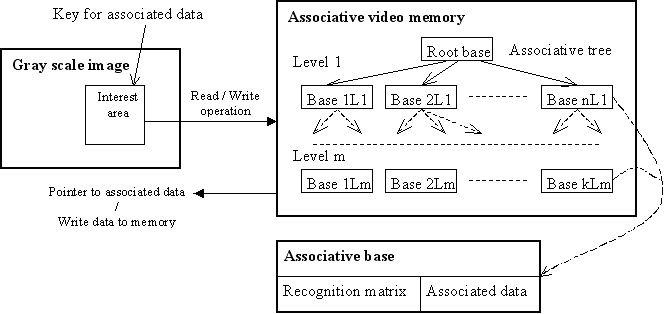Algorithm "Associative Video Memory" (AVM)
Approach
Algorithm "Associative Video Memory" (AVM) uses a principle of multilevel decomposition of recognition matrices. Inside AVM search tree is stored recognition matrices with associated data. On the upper levels of the tree there is more rough matrices with a small number of coefficients but at lower levels is stored more detailed matrices (larger number of coefficients). The matrices contain information about the location of brightness regions of objects represented in the invariant form (the coefficients of the matrices do not depend on the level of total illumination). Further scanning the image by window we get the input matrix and search it in the AVM tree. If the difference between the coefficients of the input matrix and stored in the AVM matrix by absolute value does not exceed a specified threshold then the object is recognized.
Each matrix in the AVM is associated with the user data. The AVM uses the interest area (image fragment) as a key for data access. From interest area further creates an input recognition matrix and then searches it for similar matrices in AVM tree.
Number of tree levels and dimension of the matrices depends on the key size of the image that will be defined by the user when creating new instance of the AVM (see method "Create").
Algorithm "Associative video memory" in detail: [1]
Implementation of the algorithm AVM for C#: Library AVM SDK simple.NET
